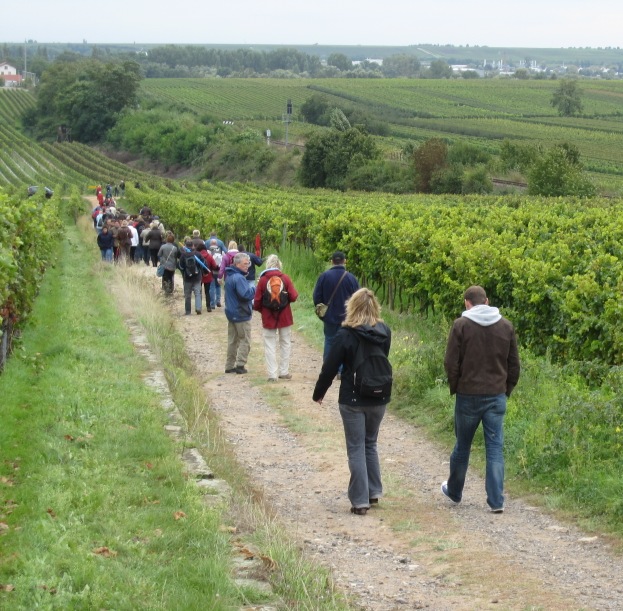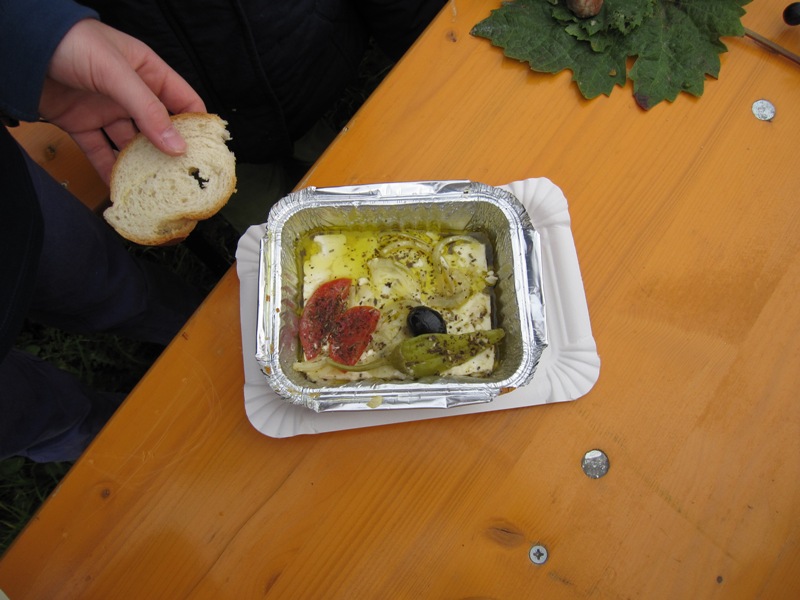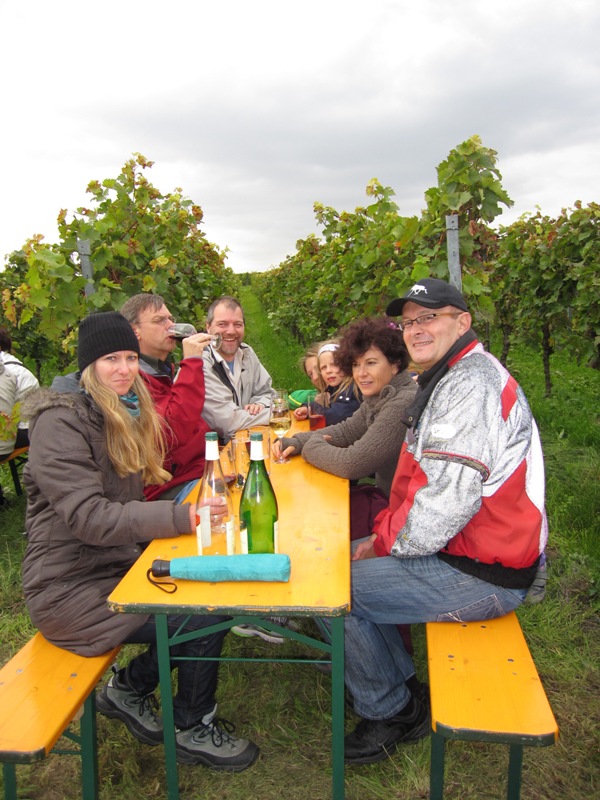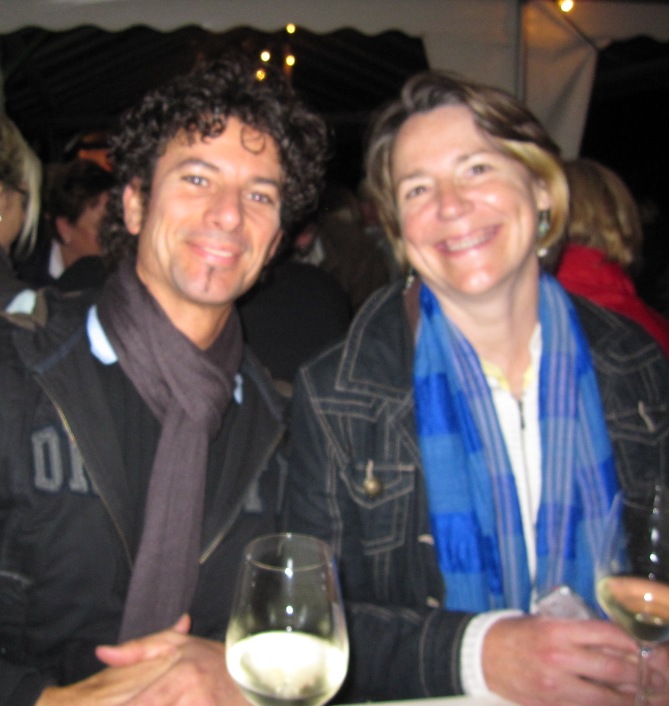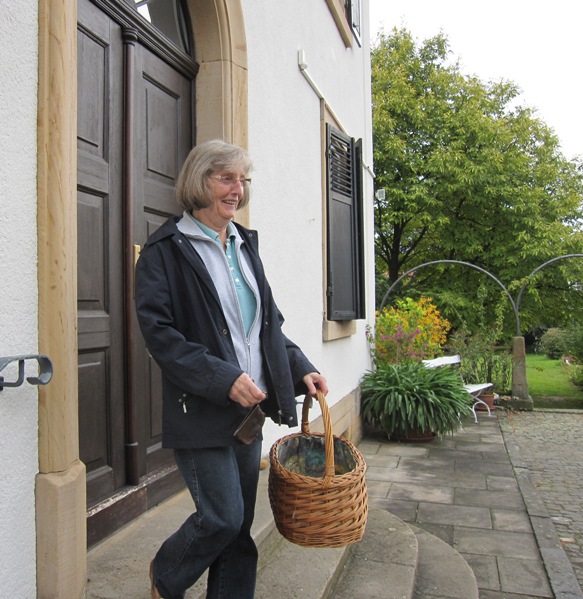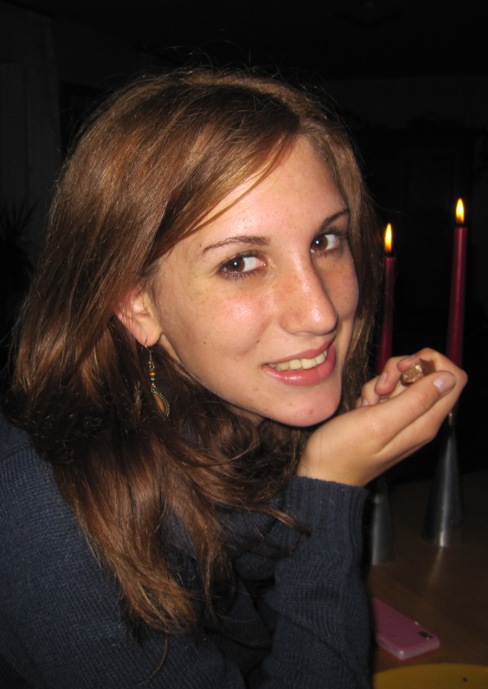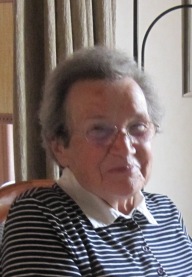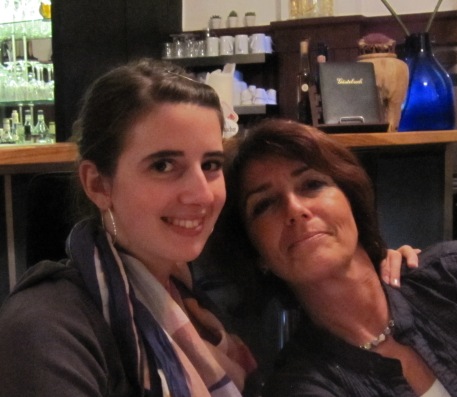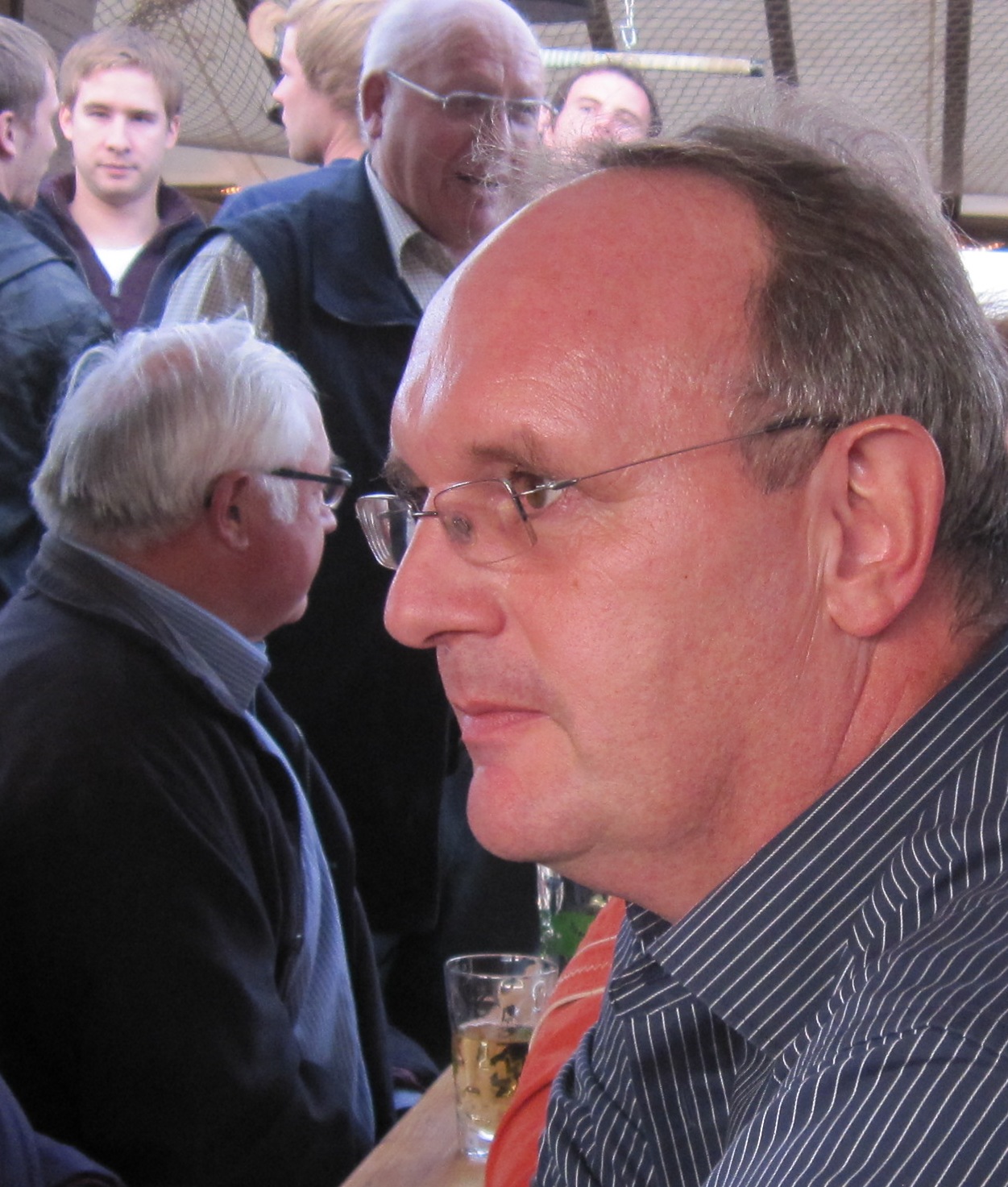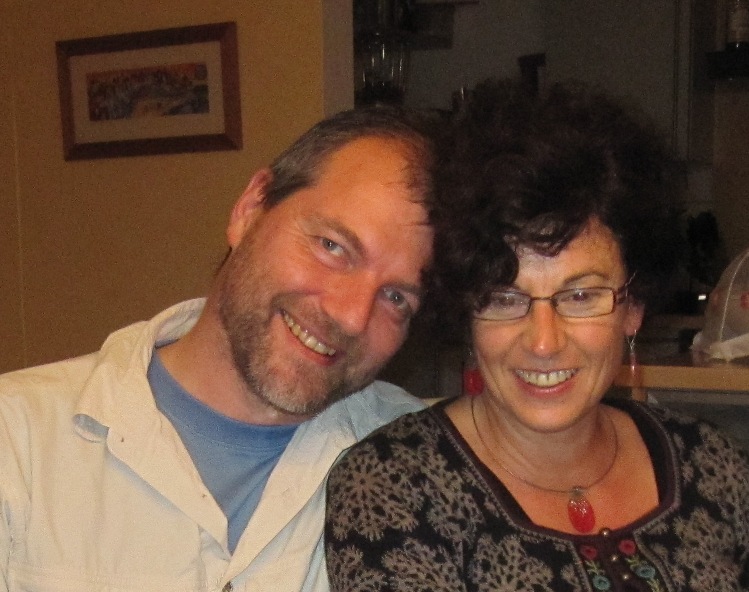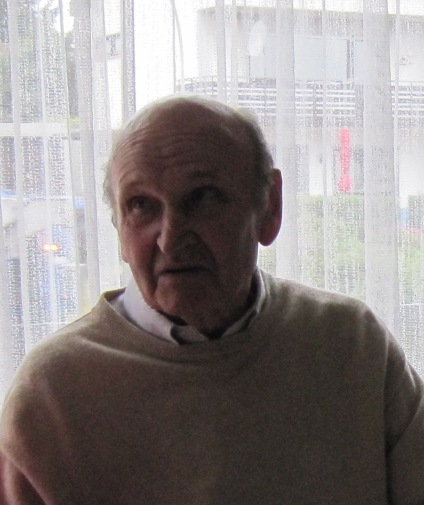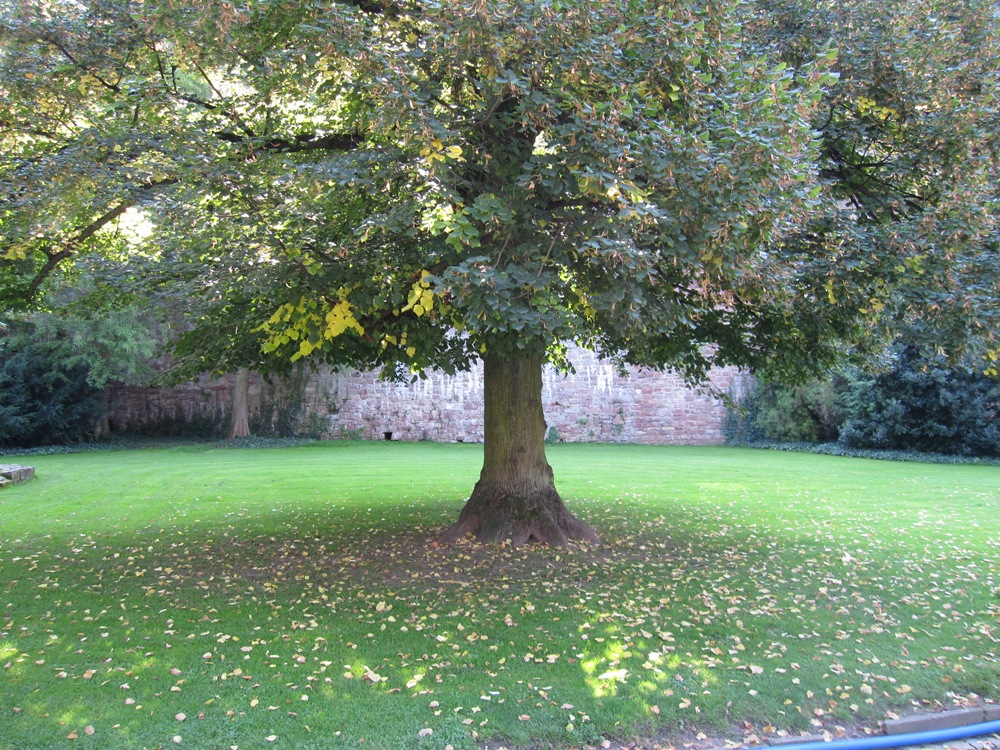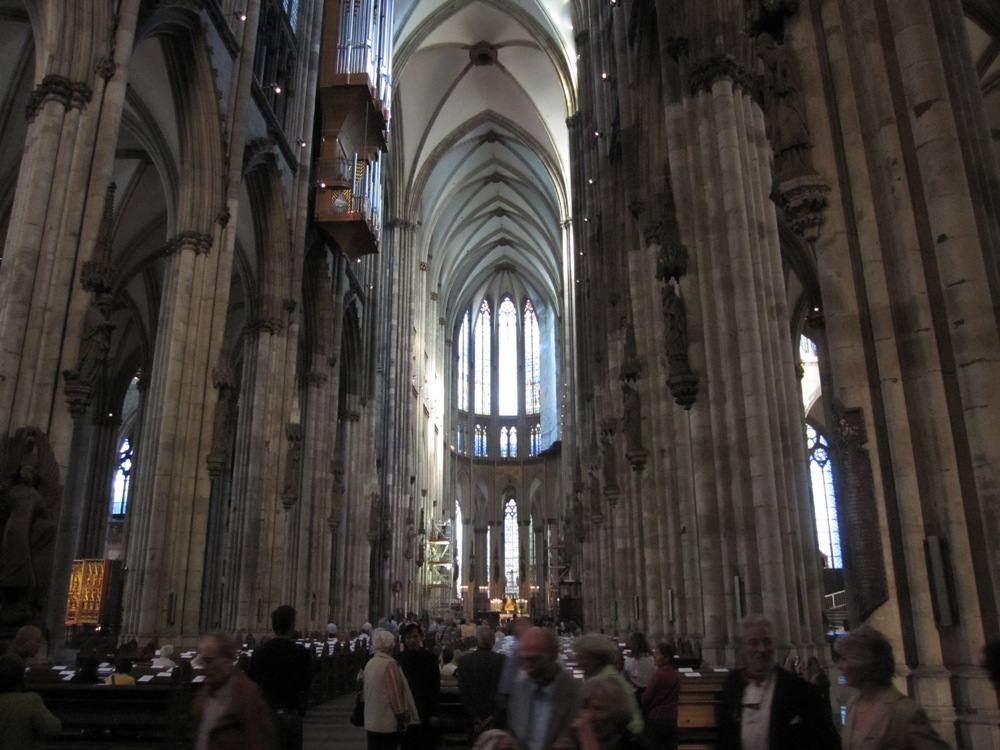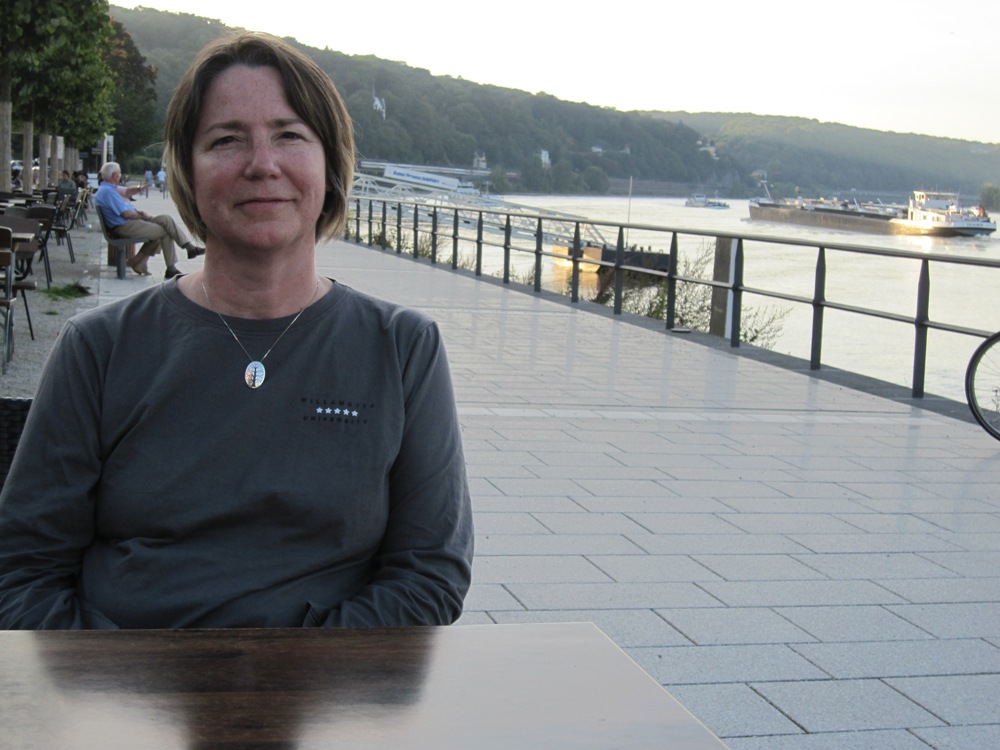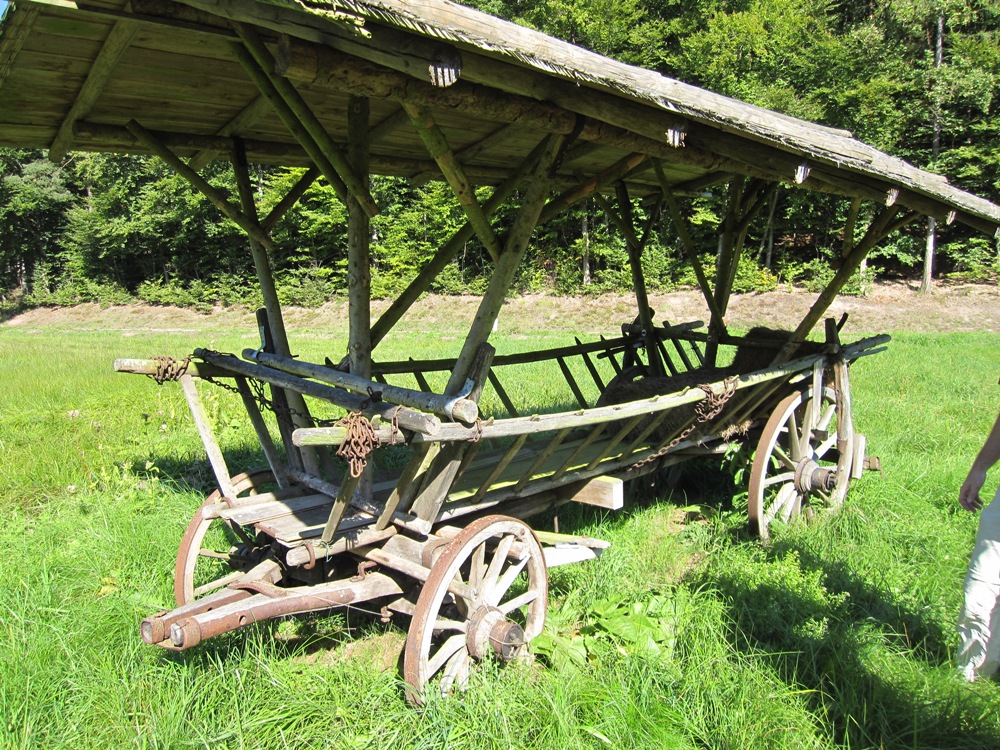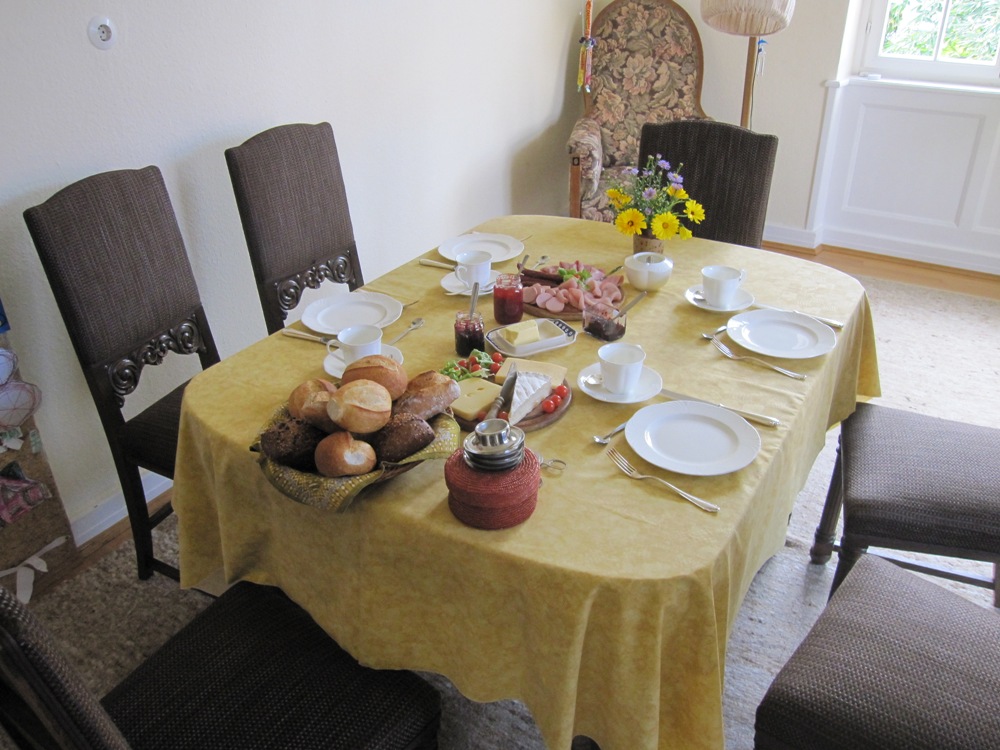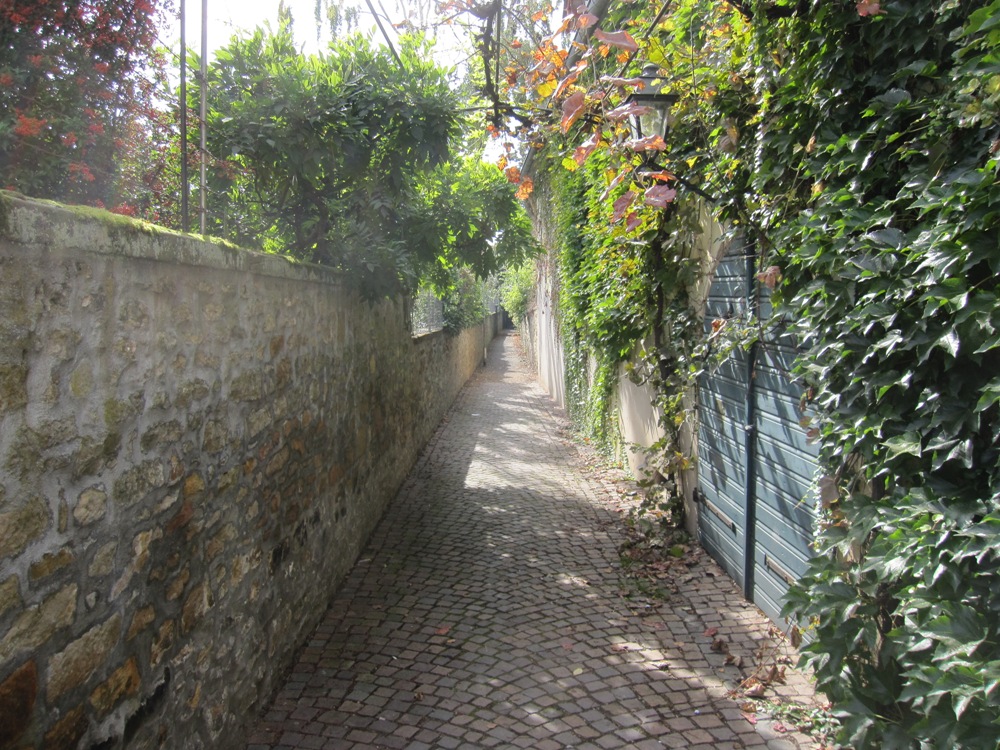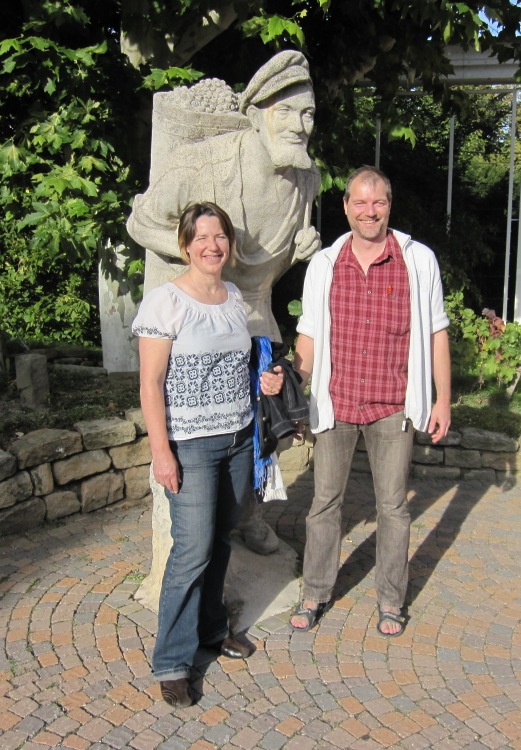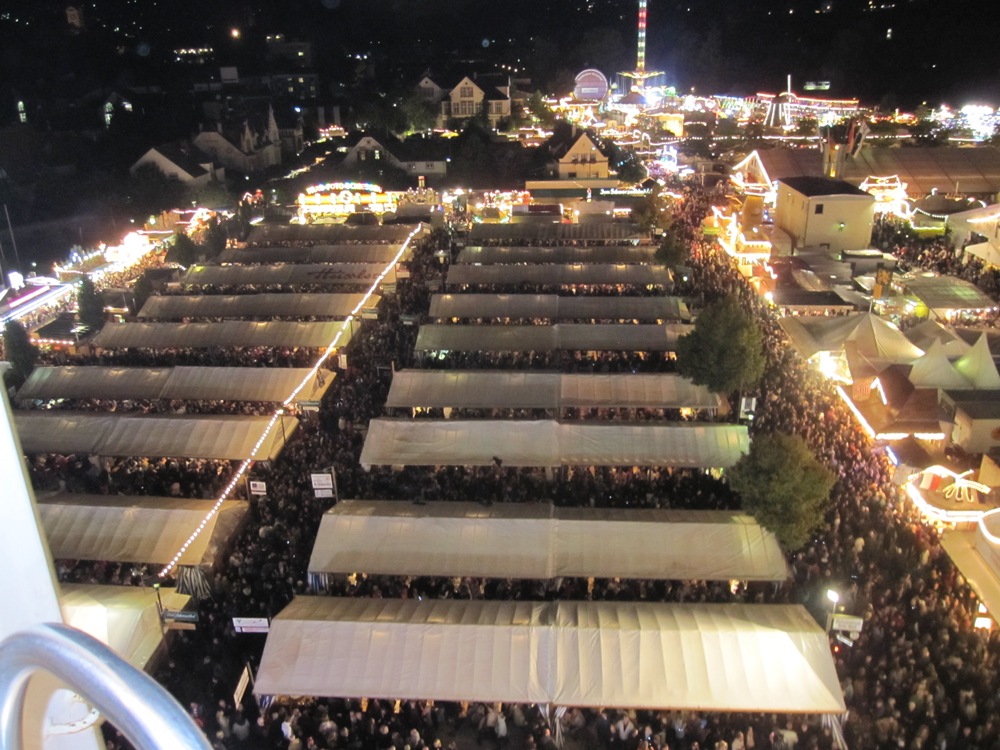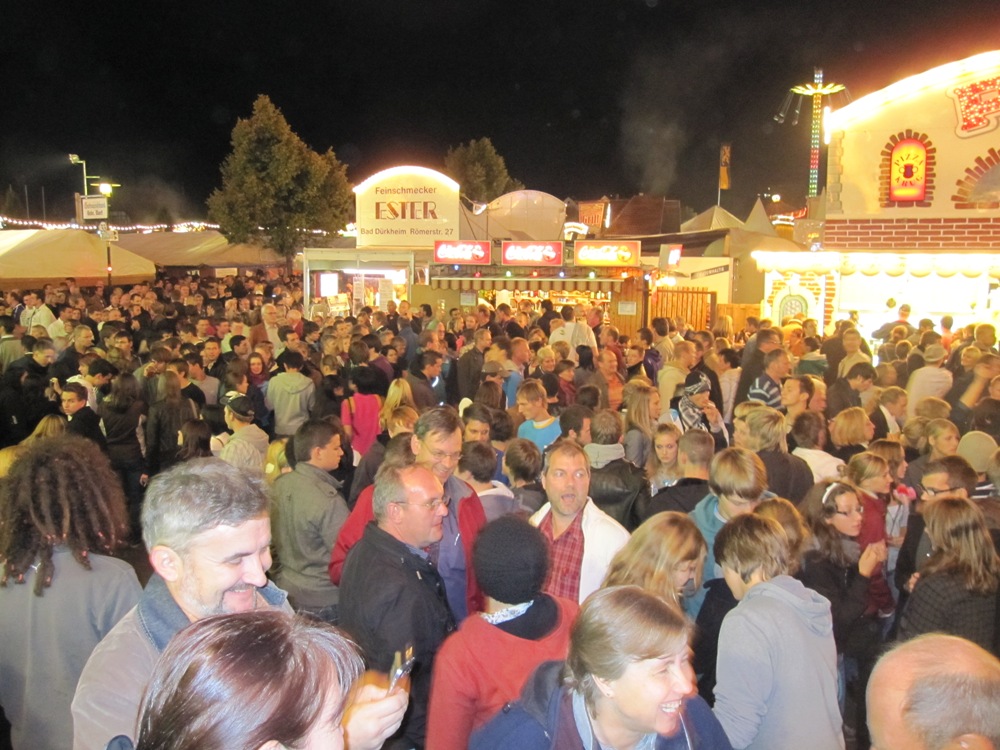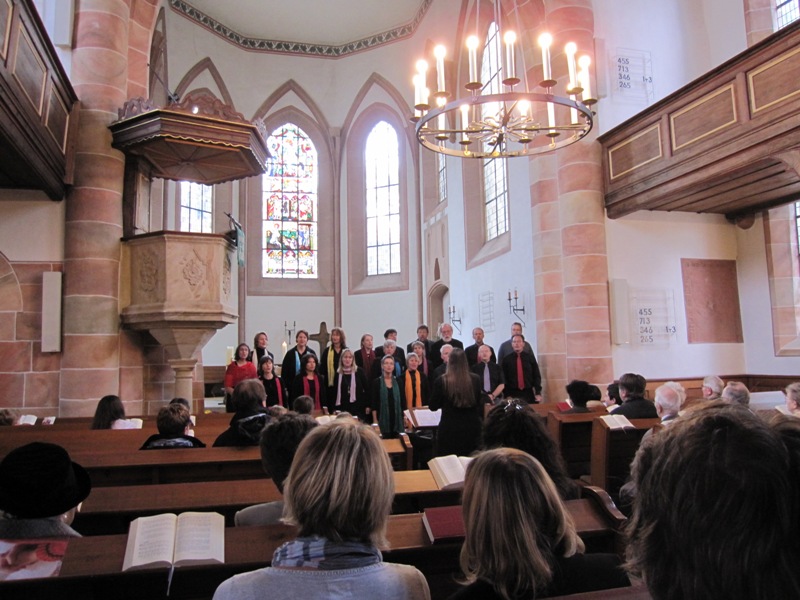 Sunday I visited two churches – the Church of my Ancestors, and the Church of German Soccer.
Sunday I visited two churches – the Church of my Ancestors, and the Church of German Soccer.
At ten in the morning, the Evangelical Protestant Church bells toll the hour to call Freinsheimers to service (church begins at 10:10). About 75 are in attendance. The Pfarrer’s talk on faith is delivered from a stone parapet, in a 250-year old building, the church of my ancestors for at least seven generations. Barbel and I sit together; across the aisle, I recognize Tante Gretel. Tante Inge comes up after the service to say hello. Choral music is offered by the Freinsheimer Gospel Choir.
 Sunday afternoon, Hans Gunther drives us to Kaiserslautern. Dave buys a Kaiserslautern team scarf on the walk in.
Sunday afternoon, Hans Gunther drives us to Kaiserslautern. Dave buys a Kaiserslautern team scarf on the walk in.
As my cousin Angela and I stand in line for the WC, she observes: “This could be a sporting event in the States, no?”
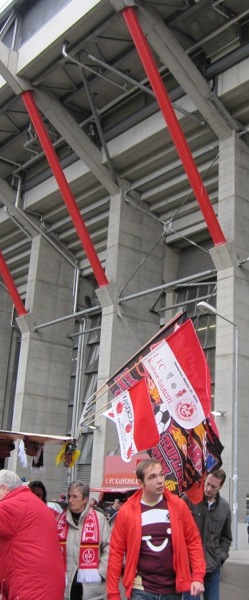
 It’s true: We could be in Seattle, or Cincinnati. Everyone is wearing their fan colors, on hats and shirts, but especially on scarves. The restroom line is so long we give up and go around the chain link fence to the rival Hannover side, where the line is almost non-existent.
It’s true: We could be in Seattle, or Cincinnati. Everyone is wearing their fan colors, on hats and shirts, but especially on scarves. The restroom line is so long we give up and go around the chain link fence to the rival Hannover side, where the line is almost non-existent.
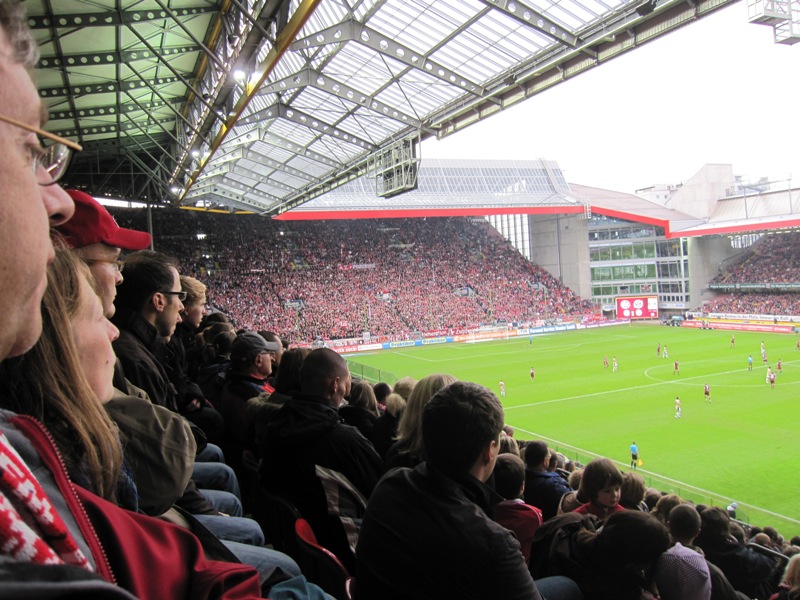 In the arena, 40,000 fans make the stadium thunder with singing and stomping. Hannover wins 1-0.
In the arena, 40,000 fans make the stadium thunder with singing and stomping. Hannover wins 1-0.
Services over, we trudge for our buses and cars in the cold, wet night.

